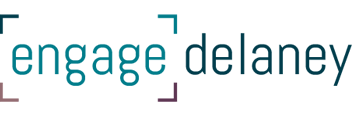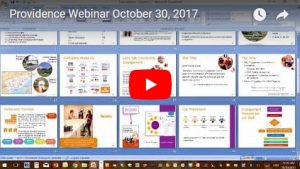Culture of Consultation Webinar: Q+A Follow-Up
It was one for the record books! On Oct. 30 Engage Delaney (D+A) partnered with Providence Healthcare in Ontario to deliver a webinar on how the organization is using the D+A Culture of Consultation Assessment Tool to benchmark and grow its capacity and organizational aptitude for community engagement, with patients, local residents, family members, caregivers, provider partners and future health service consumers.
The interactive session covered best practices and approaches currently being used by Providence, to help webinar participants augment and improve their engagement work.
As a best practice in engagement, we promised to close the loop with webinar participants by providing a summary of responses posed by participants during the Q&A and dialogue opportunities throughout the webinar.
In addition, you can find a recording of the webinar here.
Summary of Webinar Q&A
Question: What is the Culture of Consultation tool, and who originally developed it?
D+A’s Richard Delaney designed the tool to be completed by various people across an organization, often through an internal consultation process, to help assess internal capacity and readiness to adequately engage stakeholders in an ongoing way. The tool is a scoring matrix that helps any organization evaluate its current engagement capacity and practices in 10 different categories, such as “Policy / Process Guidance” and “Follow-up with Participants”. It’s being used by organizations, such as Providence Healthcare, to measure progress moving forward with future engagement activities.
The matrix provokes thought on what successful engagement looks like, while motivating ongoing improvement, and is a starting point to discuss strategy and uptake for engagement projects. It is also made up of both strategic and social elements, and can be used to strategically plan capacity-building in a way that facilitates a culture shift toward best practices for engagement.
Question: How did you (Providence) start the process in the first year? What did that look like? How did you break this down and get it off the ground? Who was involved?
The community engagement plan and framework development process spans a five-year period. Starting the process was a large undertaking, and building the engagement plan was seen as an important part of the BEST Together strategic planning process at Providence Healthcare. The communications team at Providence reached out and partnered with key players within the organization, including the Organizational Effectiveness Team, and also started a dialogue with other organizations and their internal partners. In addition, staff undertook iap2 training to better understand what “community engagement” is and how to harness it in a healthcare organization.
Providence Healthcare then invited people from different areas of the hospital to strategize and create a vision for what they wanted their community engagement approach to look like. Because the approach was new and represented a culture shift for the organization, senior management was involved from the outset. Introducing the concept of the approach to staff, patients and their family members in the earlier stages of the development process was also critical to its success.
Question: How long did the “conversation and culture shift process” take during Providence Healthcare’s three-year-long journey to date? Specifically, how long did it take from building a robust engagement program to get to the place they are now?
In Year 1, it took Providence approximately six months for internal partners to review their findings and define how they wanted build the engagement framework. In addition, it took roughly another six months to actually build the engagement framework. The majority of Year 2 was dedicated to building an onboarding process for those potentially interested in becoming Community Engagement (CE) partners. In addition, an education plan and supporting tool kit, filled with capacity-building resources, was developed by the CE Steering Committee (composed of former patients and staff champions) members, and shared internally among staff. Now in Year 3, Providence has moved from the development phase to implementation and operationalization. The engagement program and tool kit are currently being tested to identify opportunities to add value.
In summary, it is an ongoing process, and Providence Healthcare is striving to reach its desired level of engagement capacity and recognizing the ongoing culture shift.
Question: What were some of the lessons you learned along the way?
- Quality and Co-Producing Value: Make sure anything you do is producing quality through collaborating with your stakeholders to recognize and appreciate their interests in the work that you do.
- Ensure Representation of Views: Advisory committees, comprised of representatives from your stakeholder groups, will help ensure your engagement framework and processes are serving the needs of your population.
- Engage Vs. Intervene: Make sure that your approach is guided by dual conversations where all parties involved can work towards co-designing a solution together.
- Build Partnerships, Networks and Alliances: Internal partnerships are important to ensuring commitment to the engagement goals of your organization. In addition, creating and building viable networks among other community engagement professionals will provide insights and create a new foundation to learn best practices from each other. Establishing alliances with your stakeholders is also critical in serving their needs and interests. In doing so, however, you will have to be open and willing to accept a degree vulnerability to seek out the best opportunities and practices to help facilitate effective change within your organization.
Question: You refer to your framework as a “community engagement” plan and framework, but you also reference patients and their families. Is there a particular reason why you didn’t include the word “patients” in the name of the framework and plan?
Providence Healthcare has a very large community of stakeholders, so we decided to call it “community engagement” to ensure no matter where someone falls within the Providence community, they would be able to see themselves reflected in the work we are doing here.




